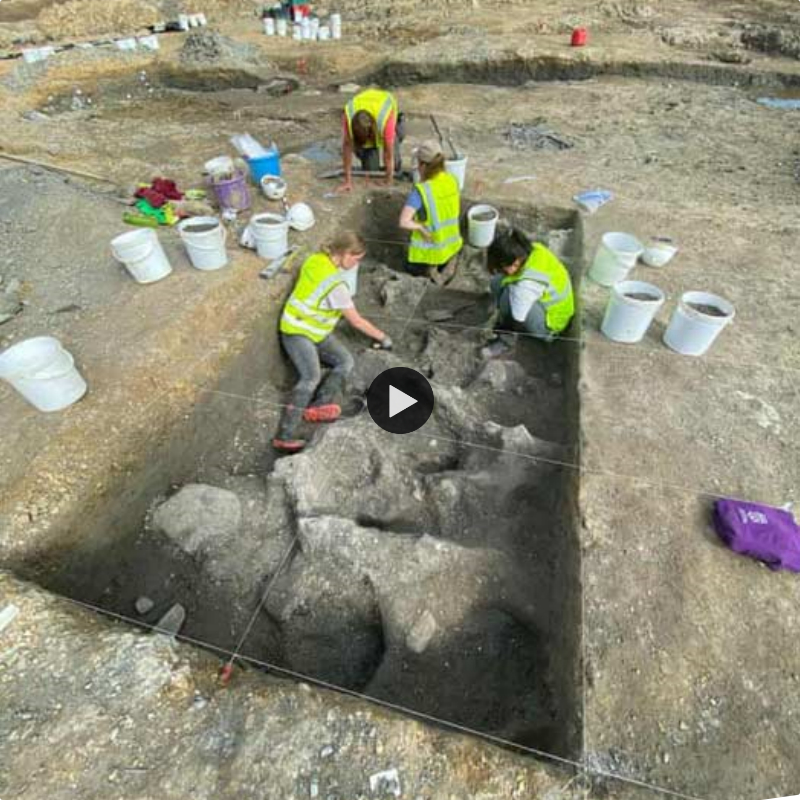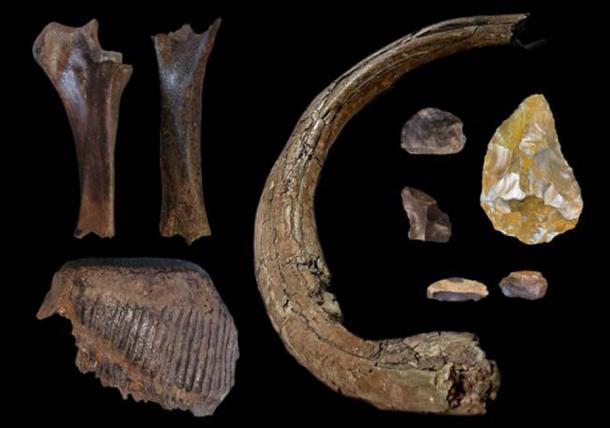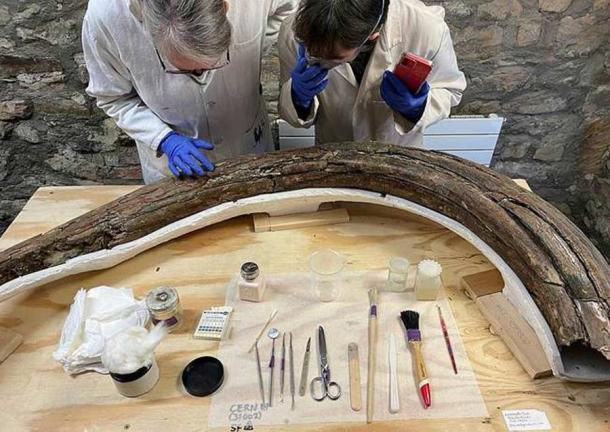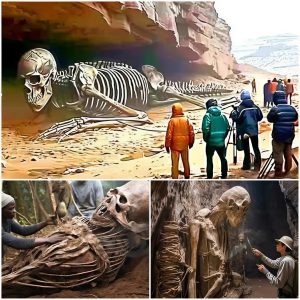The discovery began with the unearthing of a finely crafted hand axe during a routine excavation near the small village of Saint-André. Dr. Isabelle Moreau, a prominent archaeologist from the University of Lyon, led the team that made the initial find.
“We were conducting a standard survey of the area when we stumbled upon the hand axe,” Dr. Moreau explained. “Its craftsmanship was extraordinary, and we knew it was a significant find. What we didn’t realize was that it was just the beginning.”
A Path to the Past
The hand axe, dated to approximately 50,000 years ago, suggested the presence of Neanderthal activity in the region. Intrigued by the implications, Dr. Moreau’s team expanded their excavation efforts, meticulously following clues left by their ancient predecessors. The journey led them to a nearby site that revealed an astonishing sight: the remains of over 50 mammoths, preserved in what appeared to be a mass grave.

Unraveling the Mystery
The excavation of the mammoth graveyard has provided invaluable data. The arrangement of the bones suggests that the Neanderthals may have strategically driven the mammoths into a natural trap, such as a ravine or marshland, where they could be more easily hunted. This finding challenges previous assumptions about Neanderthal hunting techniques and social organization.
“These findings indicate a high level of cooperation and planning among Neanderthal groups,” said Dr. Moreau. “The presence of multiple hand axes and other tools at the site suggests that this was a coordinated effort involving many individuals.”

Insights into Prehistoric Life
The mammoth remains have also yielded important information about the diet and lifestyle of both the mammoths and the Neanderthals. Analysis of the bones shows signs of butchering, providing evidence of how these prehistoric humans processed and utilized their massive prey.
“Discovering such a well-preserved site gives us a rare glimpse into the daily lives of Neanderthals,” said Dr. Jean-Luc Durand, a paleoanthropologist involved in the study. “It highlights their adaptability and ingenuity in a harsh and challenging environment.”
A Treasure Trove for Science
The implications of this discovery extend beyond Neanderthal behavior. The mammoth bones, some of which still contain traces of ancient DNA, offer a unique opportunity for genetic studies. Researchers hope to gain insights into the mammoths’ biology, migration patterns, and interactions with their environment.
“The genetic material preserved in these bones is a treasure trove for scientists,” said Dr. Claire Dubois, a geneticist specializing in ancient DNA. “It allows us to explore the evolutionary history of mammoths and their responses to climatic changes during the Ice Age.”
Global Significance
The discovery has garnered international attention, drawing interest from archaeologists, paleontologists, and historians worldwide. Plans are already underway for a comprehensive research project involving experts from various disciplines to fully explore and document the site.
“This is a once-in-a-lifetime discovery that will significantly advance our understanding of both Neanderthals and mammoths,” said Dr. Moreau. “It’s a reminder of the rich and complex history that lies beneath our feet, waiting to be uncovered.”

Looking Ahead
As excavation and research continue, the Neanderthal hand axe and the mammoth graveyard are set to become key exhibits in the Museum of Natural History in Lyon, where they will be displayed to the public. This discovery not only enriches our knowledge of the past but also inspires a deeper appreciation for the resilience and ingenuity of our ancient ancestors.
For now, the fields of Saint-André are quiet, but the echoes of the past have been awakened, offering a tantalizing glimpse into a world long gone but never forgotten.





